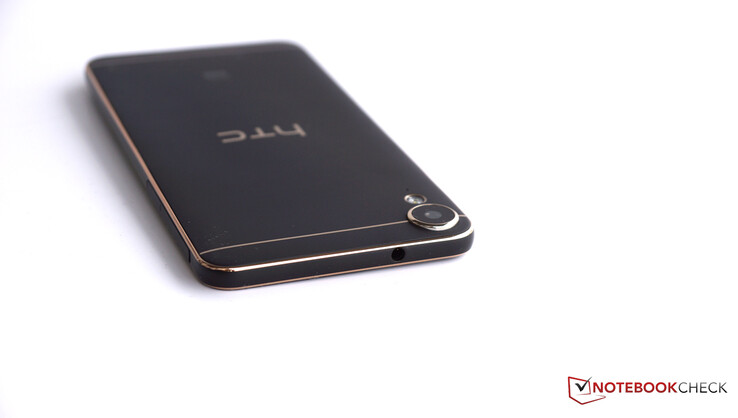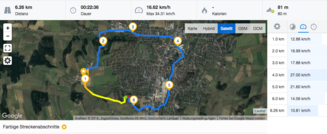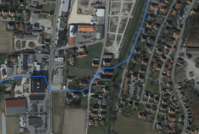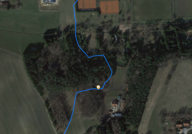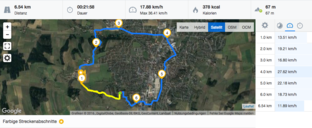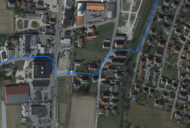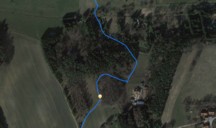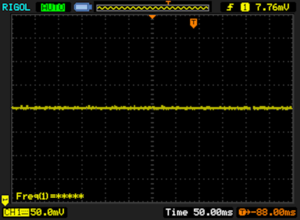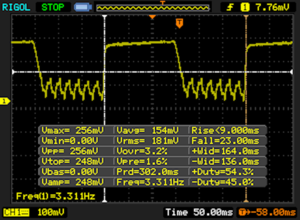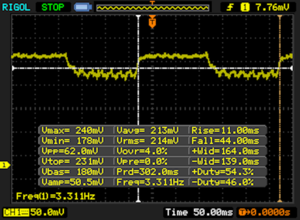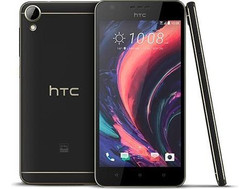Breve Análise do Smartphone HTC Desire 10 Lifestyle
Os Top 10
» Os Top 10 Portáteis Multimídia
» Os Top 10 Portáteis de Jogos
» Os Top 10 Portáteis Leves para Jogos
» Os Top 10 Portáteis Acessíveis de Escritório/Empresariais
» Os Top 10 Portáteis Premium de Escritório/Empresariais
» Os Top 10 dos Portáteis Workstation
» Os Top 10 Subportáteis
» Os Top 10 Ultrabooks
» Os Top 10 Conversíveis
» Os Top 10 Tablets
» Os Top 10 Smartphones
» A melhores Telas de Portáteis Analisadas Pela Notebookcheck
» Top 10 dos portáteis abaixo dos 500 Euros da Notebookcheck
» Top 10 dos Portáteis abaixo dos 300 Euros
Size Comparison
| Networking | |
| iperf3 transmit AX12 | |
| ZTE Axon 7 | |
| HTC Desire 10 Lifestyle | |
| Asus Zenfone 3 ZE552KL | |
| iperf3 receive AX12 | |
| ZTE Axon 7 | |
| HTC Desire 10 Lifestyle | |
| Asus Zenfone 3 ZE552KL | |
| |||||||||||||||||||||||||
iluminação: 92 %
iluminação com acumulador: 380 cd/m²
Contraste: 1462:1 (Preto: 0.26 cd/m²)
ΔE ColorChecker Calman: 6.6 | ∀{0.5-29.43 Ø4.77}
ΔE Greyscale Calman: 7.4 | ∀{0.09-98 Ø5}
96.6% sRGB (Calman 2D)
Gamma: 2.29
CCT: 8665 K
| HTC Desire 10 Lifestyle IPS, 1280x720, 5.5" | ZTE Axon 7 AMOLED, 2560x1440, 5.5" | LG Stylus 2 IPS, 1280x720, 5.7" | Lenovo Moto G4 Plus IPS, 1920x1080, 5.5" | Asus Zenfone 3 ZE552KL IPS, 1920x1080, 5.5" | |
|---|---|---|---|---|---|
| Screen | 4% | -5% | 7% | 3% | |
| Brightness middle (cd/m²) | 380 | 328 -14% | 370 -3% | 609 60% | 658 73% |
| Brightness (cd/m²) | 369 | 334 -9% | 374 1% | 589 60% | 633 72% |
| Brightness Distribution (%) | 92 | 88 -4% | 92 0% | 87 -5% | 93 1% |
| Black Level * (cd/m²) | 0.26 | 0.25 4% | 0.63 -142% | 0.66 -154% | |
| Contrast (:1) | 1462 | 1480 1% | 967 -34% | 997 -32% | |
| Colorchecker dE 2000 * | 6.6 | 4.6 30% | 6.1 8% | 3.8 42% | 4.9 26% |
| Colorchecker dE 2000 max. * | 10.4 | 14.7 -41% | 16.5 -59% | 8.3 20% | 9.1 12% |
| Greyscale dE 2000 * | 7.4 | 2.8 62% | 7 5% | 3.1 58% | 5.8 22% |
| Gamma | 2.29 96% | 2.29 96% | 2.25 98% | 2.06 107% | 2.26 97% |
| CCT | 8665 75% | 6612 98% | 8350 78% | 6725 97% | 7840 83% |
* ... menor é melhor
Cintilação da tela / PWM (modulação por largura de pulso)
| Tela tremeluzindo / PWM não detectado | |||
[pwm_comparison] Em comparação: 53 % de todos os dispositivos testados não usam PWM para escurecer a tela. Se PWM foi detectado, uma média de 8086 (mínimo: 5 - máximo: 343500) Hz foi medida. | |||
Exibir tempos de resposta
| ↔ Tempo de resposta preto para branco | ||
|---|---|---|
| 32 ms ... ascensão ↗ e queda ↘ combinadas | ↗ 9 ms ascensão | |
| ↘ 23 ms queda | ||
| A tela mostra taxas de resposta lentas em nossos testes e será insatisfatória para os jogadores. Em comparação, todos os dispositivos testados variam de 0.1 (mínimo) a 240 (máximo) ms. » 85 % de todos os dispositivos são melhores. Isso significa que o tempo de resposta medido é pior que a média de todos os dispositivos testados (20.2 ms). | ||
| ↔ Tempo de resposta 50% cinza a 80% cinza | ||
| 55 ms ... ascensão ↗ e queda ↘ combinadas | ↗ 11 ms ascensão | |
| ↘ 44 ms queda | ||
| A tela mostra taxas de resposta lentas em nossos testes e será insatisfatória para os jogadores. Em comparação, todos os dispositivos testados variam de 0.165 (mínimo) a 636 (máximo) ms. » 91 % de todos os dispositivos são melhores. Isso significa que o tempo de resposta medido é pior que a média de todos os dispositivos testados (31.6 ms). | ||
| AnTuTu v6 - Total Score (classificar por valor) | |
| HTC Desire 10 Lifestyle | |
| ZTE Axon 7 | |
| LG Stylus 2 | |
| Lenovo Moto G4 Plus | |
| Asus Zenfone 3 ZE552KL | |
| Geekbench 4.0 | |
| 64 Bit Single-Core Score (classificar por valor) | |
| HTC Desire 10 Lifestyle | |
| ZTE Axon 7 | |
| Asus Zenfone 3 ZE552KL | |
| 64 Bit Multi-Core Score (classificar por valor) | |
| HTC Desire 10 Lifestyle | |
| ZTE Axon 7 | |
| Asus Zenfone 3 ZE552KL | |
| 3DMark | |
| 1280x720 offscreen Ice Storm Unlimited Score (classificar por valor) | |
| HTC Desire 10 Lifestyle | |
| ZTE Axon 7 | |
| LG Stylus 2 | |
| Lenovo Moto G4 Plus | |
| Asus Zenfone 3 ZE552KL | |
| 1280x720 offscreen Ice Storm Unlimited Graphics Score (classificar por valor) | |
| ZTE Axon 7 | |
| LG Stylus 2 | |
| Lenovo Moto G4 Plus | |
| Asus Zenfone 3 ZE552KL | |
| 1280x720 offscreen Ice Storm Unlimited Physics (classificar por valor) | |
| ZTE Axon 7 | |
| LG Stylus 2 | |
| Lenovo Moto G4 Plus | |
| Asus Zenfone 3 ZE552KL | |
| 2560x1440 Sling Shot OpenGL ES 3.0 (classificar por valor) | |
| HTC Desire 10 Lifestyle | |
| ZTE Axon 7 | |
| LG Stylus 2 | |
| Lenovo Moto G4 Plus | |
| Asus Zenfone 3 ZE552KL | |
| 2560x1440 Sling Shot OpenGL ES 3.0 Graphics (classificar por valor) | |
| HTC Desire 10 Lifestyle | |
| ZTE Axon 7 | |
| LG Stylus 2 | |
| Lenovo Moto G4 Plus | |
| Asus Zenfone 3 ZE552KL | |
| 2560x1440 Sling Shot OpenGL ES 3.0 Physics (classificar por valor) | |
| HTC Desire 10 Lifestyle | |
| ZTE Axon 7 | |
| LG Stylus 2 | |
| Lenovo Moto G4 Plus | |
| Asus Zenfone 3 ZE552KL | |
| GFXBench (DX / GLBenchmark) 2.7 | |
| T-Rex Onscreen (classificar por valor) | |
| HTC Desire 10 Lifestyle | |
| ZTE Axon 7 | |
| LG Stylus 2 | |
| Lenovo Moto G4 Plus | |
| Asus Zenfone 3 ZE552KL | |
| 1920x1080 T-Rex Offscreen (classificar por valor) | |
| HTC Desire 10 Lifestyle | |
| ZTE Axon 7 | |
| LG Stylus 2 | |
| Lenovo Moto G4 Plus | |
| Asus Zenfone 3 ZE552KL | |
| GFXBench 3.0 | |
| on screen Manhattan Onscreen OGL (classificar por valor) | |
| HTC Desire 10 Lifestyle | |
| ZTE Axon 7 | |
| LG Stylus 2 | |
| Lenovo Moto G4 Plus | |
| Asus Zenfone 3 ZE552KL | |
| 1920x1080 1080p Manhattan Offscreen (classificar por valor) | |
| HTC Desire 10 Lifestyle | |
| ZTE Axon 7 | |
| LG Stylus 2 | |
| Lenovo Moto G4 Plus | |
| Asus Zenfone 3 ZE552KL | |
| PCMark for Android - Work performance score (classificar por valor) | |
| HTC Desire 10 Lifestyle | |
| ZTE Axon 7 | |
| LG Stylus 2 | |
| Lenovo Moto G4 Plus | |
| Asus Zenfone 3 ZE552KL | |
| Mozilla Kraken 1.1 - Total (classificar por valor) | |
| HTC Desire 10 Lifestyle | |
| ZTE Axon 7 | |
| LG Stylus 2 | |
| Lenovo Moto G4 Plus | |
| Asus Zenfone 3 ZE552KL | |
| Octane V2 - Total Score (classificar por valor) | |
| HTC Desire 10 Lifestyle | |
| ZTE Axon 7 | |
| LG Stylus 2 | |
| Lenovo Moto G4 Plus | |
| Asus Zenfone 3 ZE552KL | |
| WebXPRT 2015 - Overall (classificar por valor) | |
| HTC Desire 10 Lifestyle | |
| ZTE Axon 7 | |
| LG Stylus 2 | |
| Lenovo Moto G4 Plus | |
| Asus Zenfone 3 ZE552KL | |
| JetStream 1.1 - Total Score (classificar por valor) | |
| HTC Desire 10 Lifestyle | |
| ZTE Axon 7 | |
| LG Stylus 2 | |
| Lenovo Moto G4 Plus | |
| Asus Zenfone 3 ZE552KL | |
* ... menor é melhor
| Asphalt 8: Airborne | |||
| Configurações | Valor | ||
| high | 18 fps | ||
| Dead Trigger 2 | |||
| Configurações | Valor | ||
| high | 29 fps | ||
(+) A temperatura máxima no lado superior é 37.4 °C / 99 F, em comparação com a média de 35.2 °C / 95 F , variando de 21.9 a 247 °C para a classe Smartphone.
(+) A parte inferior aquece até um máximo de 36 °C / 97 F, em comparação com a média de 34 °C / 93 F
(+) Em uso inativo, a temperatura média para o lado superior é 30.8 °C / 87 F, em comparação com a média do dispositivo de 32.9 °C / ### class_avg_f### F.
HTC Desire 10 Lifestyle análise de áudio
(±) | o volume do alto-falante é médio, mas bom (###valor### dB)
Graves 100 - 315Hz
(-) | quase nenhum baixo - em média 20.2% menor que a mediana
(-) | graves não são lineares (18.5% delta para frequência anterior)
Médios 400 - 2.000 Hz
(+) | médios equilibrados - apenas 3.3% longe da mediana
(+) | médios são lineares (4.1% delta para frequência anterior)
Altos 2 - 16 kHz
(+) | agudos equilibrados - apenas 3.2% longe da mediana
(+) | os máximos são lineares (4.4% delta da frequência anterior)
Geral 100 - 16.000 Hz
(±) | a linearidade do som geral é média (20.7% diferença em relação à mediana)
Comparado com a mesma classe
» 37% de todos os dispositivos testados nesta classe foram melhores, 8% semelhantes, 55% piores
» O melhor teve um delta de 11%, a média foi 35%, o pior foi 134%
Comparado com todos os dispositivos testados
» 55% de todos os dispositivos testados foram melhores, 8% semelhantes, 37% piores
» O melhor teve um delta de 4%, a média foi 24%, o pior foi 134%
ZTE Axon 7 análise de áudio
(+) | os alto-falantes podem tocar relativamente alto (###valor### dB)
Graves 100 - 315Hz
(-) | quase nenhum baixo - em média 25.8% menor que a mediana
(±) | a linearidade dos graves é média (12.3% delta para a frequência anterior)
Médios 400 - 2.000 Hz
(±) | médios mais altos - em média 6% maior que a mediana
(+) | médios são lineares (4.6% delta para frequência anterior)
Altos 2 - 16 kHz
(±) | máximos mais altos - em média 7.7% maior que a mediana
(±) | a linearidade dos máximos é média (7% delta para frequência anterior)
Geral 100 - 16.000 Hz
(±) | a linearidade do som geral é média (24.4% diferença em relação à mediana)
Comparado com a mesma classe
» 58% de todos os dispositivos testados nesta classe foram melhores, 7% semelhantes, 35% piores
» O melhor teve um delta de 11%, a média foi 35%, o pior foi 134%
Comparado com todos os dispositivos testados
» 73% de todos os dispositivos testados foram melhores, 6% semelhantes, 21% piores
» O melhor teve um delta de 4%, a média foi 24%, o pior foi 134%
| HTC Desire 10 Lifestyle 2700 mAh | ZTE Axon 7 3250 mAh | LG Stylus 2 3000 mAh | Lenovo Moto G4 Plus 3000 mAh | Asus Zenfone 3 ZE552KL 3000 mAh | |
|---|---|---|---|---|---|
| Duração da bateria | 2% | 5% | 5% | 34% | |
| Reader / Idle (h) | 24.8 | 28.9 17% | 20.4 -18% | 20.4 -18% | 25 1% |
| H.264 (h) | 10.4 | 11.7 13% | 11.6 12% | 12.9 24% | 15.1 45% |
| WiFi v1.3 (h) | 9.6 | 6.9 -28% | 11.1 16% | 12.3 28% | 13.3 39% |
| Load (h) | 3.9 | 4.1 5% | 4.3 10% | 3.4 -13% | 5.9 51% |
Pro
Contra
A HTC tomou algumas atualizações "provocadoras" para o seu Desire 10 Lifestyle. Isto torna o smartphone em um aparelho que pode não ser adequado para qualquer usuário, mas oferece uma ótima experiência de som por pouco dinheiro.
Mas primeiro o primeiro. Estamos na gama média e, portanto, não é surpreendente que a HTC tivesse que fazer alguns compromissos para incorporar recursos de gama alta como som de alta resolução de 24-bits no modelo de teste. A tela não tem uma resolução particularmente alta e não é muito brilhante. A duração da bateria é apenas medíocre e as taxas de desempenho estão evidentemente abaixo do padrão na faixa de preços. As câmeras não são convincentes e não se espera uma atualização para a mais recente versão Android, em vista da tecnologia desatualizada. Os usuários que valorizam a boa qualidade das chamadas terão que procurar outras opções.
O HTC Desire 10 Lifestyle pode ser descrito como um bom reprodutor de áudio de alta resolução com recursos de smartphone. Infelizmente, os aspectos como desempenho, câmeras, qualidade das chamadas e software estão, evidentemente abaixo da média.
Então, quais coisas positivas podem ser ditas? O HTC Desire 10 Lifestyle oferece uma bastante boa configuração de memória, uma carcaça relativamente bem construída, e o módulo GPS também faz um trabalho suficientemente bom. Os dispositivos de entrada são confiáveis, e também está, é claro, o som: Os alto falantes são muito bons e a saída do som via o headset é audivelmente mais completa que em outros smartphones.
Mas será isto suficiente? Provavelmente apenas para os audiófilos que não querem ou não podem pagar pelo HTC 10. Todos os outros vão ter um smartphone que apresenta um desempenho abaixo da média em muitos outros aspectos e realmente só pode servir com um som emocionante. Um genuíno reprodutor de áudio de alta resolução, por exemplo, da Sony, custa quase o mesmo que o HTC Desire 10 Lifestyle. Este fato por si só prova que não muito foi deixado no orçamento para os outros recursos.
HTC Desire 10 Lifestyle
- 12/09/2016 v6 (old)
Florian Wimmer


